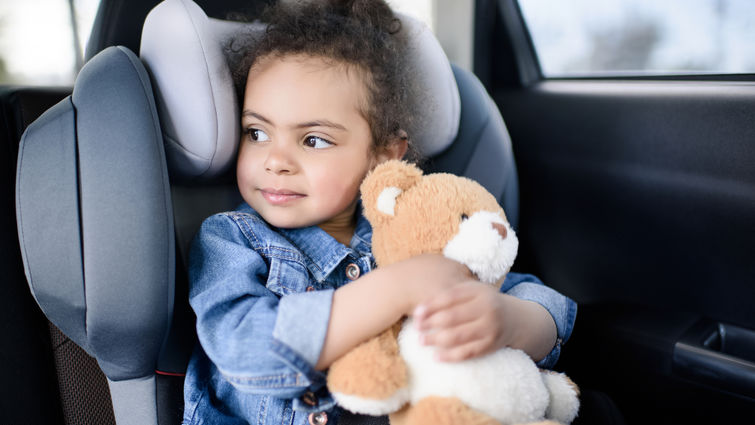
Seventeen children have died due to vehicular heatstroke in the United States during 2022, according to the National Safety Council. And while none of these horrific incidences have occurred in California, Michelle Parker, Safe Kids Coordinator Inland Empire at Loma Linda University Children's Hospital, hopes to keep it that way by raising awareness and educating the public on hot car safety.
The number one thing to remember? There is no safe amount of time to leave your child unattended in a car. The temperature inside a vehicle is much higher than the outside air temperature, and just rolling a window down will not cool the car enough to help.
"Parents may think it's okay to run into the store to grab something and let their baby sleep for 5 or 10 minutes. But in reality, a car can heat up by 20 degrees in 10 minutes," Parker says. "Even parking your car in a shaded area with outdoor temps lower than 80 degrees can still cause child and infant heatstroke injury and death."
According to Safe Kids Worldwide, younger children are at the highest risk of heat-related illness since their smaller bodies heat up three to five times quicker than the average adult.
Alexandra Clark, MD, division chief of general pediatrics at Children's Hospital, says that even if a child does survive heat stroke from being left unattended in a hot car, there's a high chance of life-altering severe complications, including cerebral palsy or seizure disorder.
Children left in hot cars also face severe dehydration and heat-related illness, which require immediate medical attention. Clark says three stages of heat illness include:
- Heat cramps: painful cramping of the abdominal muscles, arms, or legs
- Heat exhaustion: dizziness, nausea, vomiting, headaches, weakness, muscle pain, and sometimes unconsciousness
- Heat stroke: a temperature of 104 degrees Fahrenheit or higher and severe symptoms including nausea (if the child is old enough to indicate) and vomiting, seizures, disorientation or delirium, lack of sweating, shortness of breath, unconsciousness, and coma
Remember the acronym "A-C-T" to ensure your child doesn't fall victim to vehicular heatstroke as the summer months wind down and beyond.
A - Avoid Heatstroke
Don't leave your child alone in a car, not even for a minute. Ensure your vehicle is locked when not in use, for example, at home in the driveway or garage so kids can't become trapped inside. Additionally, keep your keys out of the easy reach of a child.
C - Create Reminders
Place something you generally carry on your body by the child's car seat, for example, a phone, purse, or briefcase, which may help ensure you don't forget your child. Or try keeping a stuffed animal in your child's car seat when it's empty and move the animal to the front seat as a visual reminder when your child is in the back seat.
T - Take Action
Call 911 if you see any child unattended in a car.
Visit SafeKids online for more safety information and tips from experts on everything you need to keep kids of any age safe from preventable injuries.
